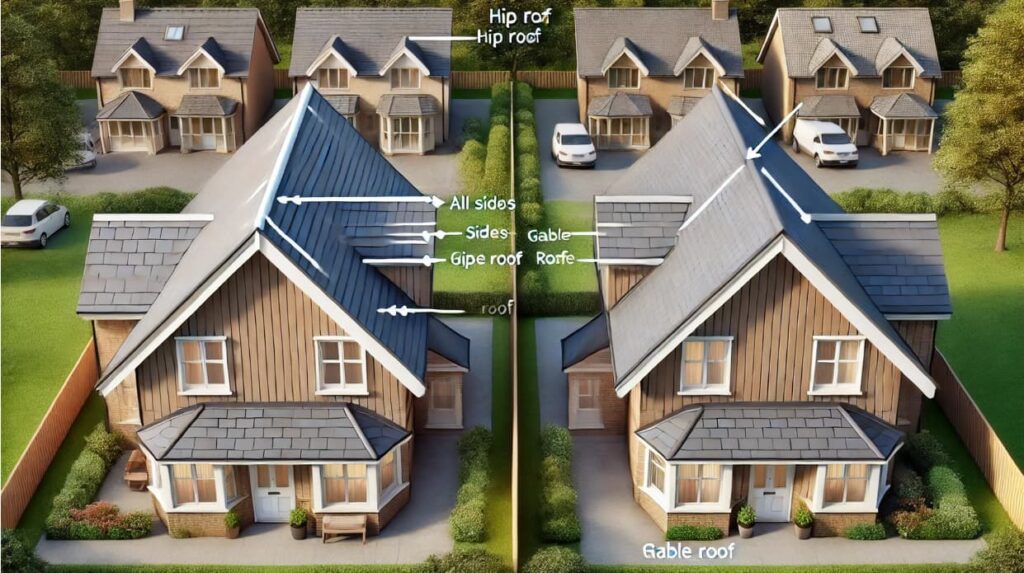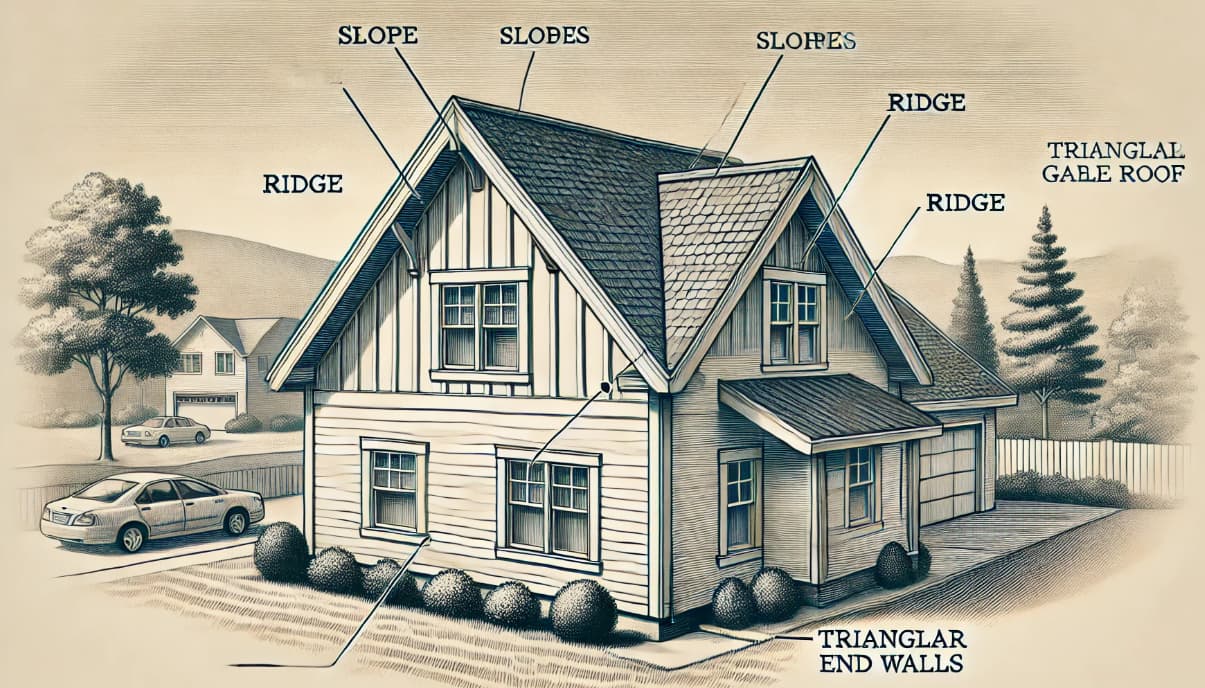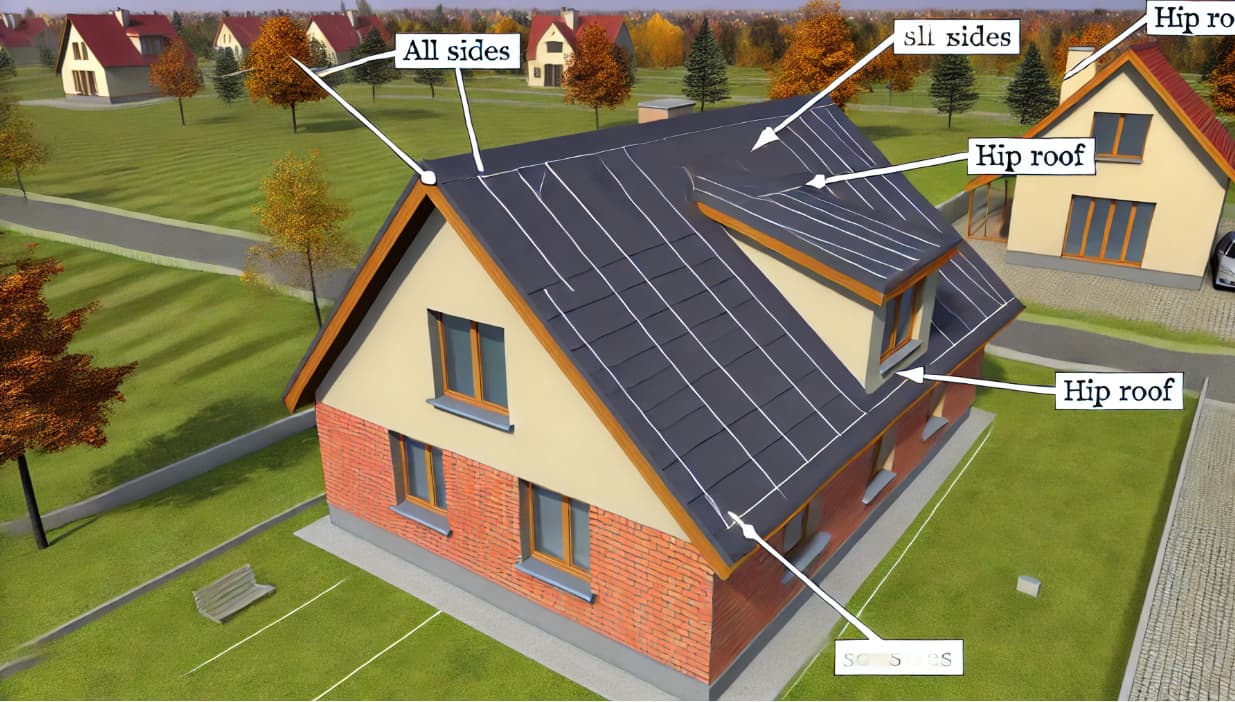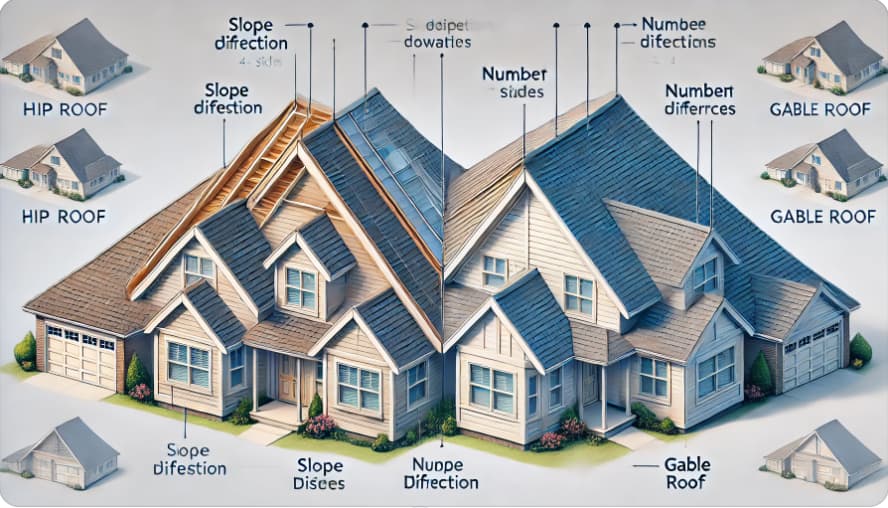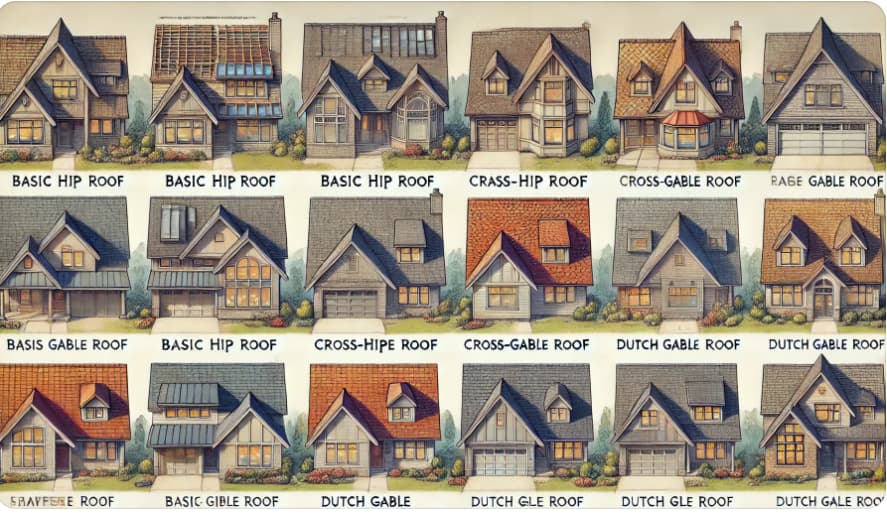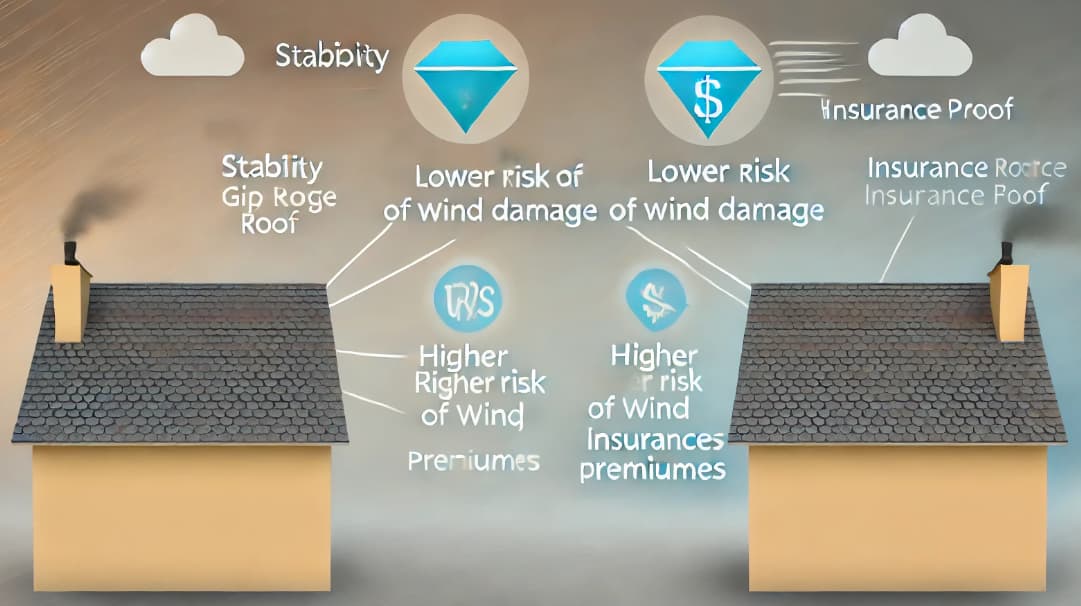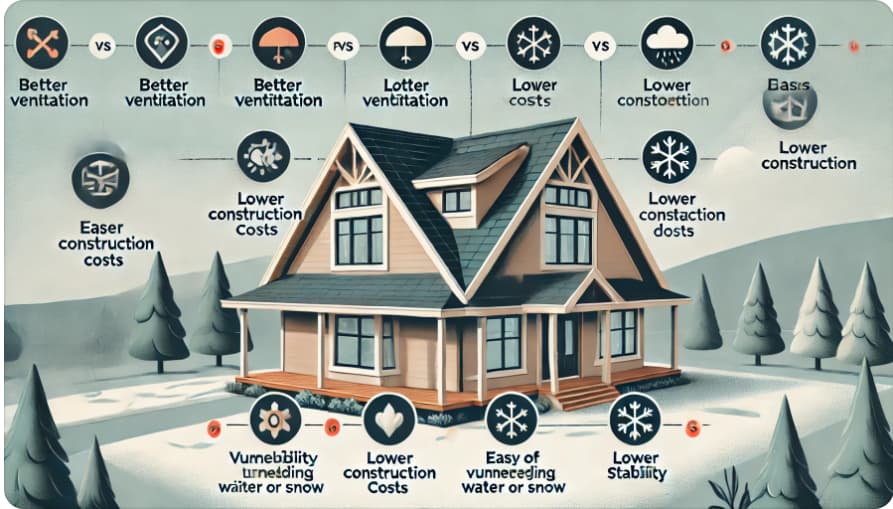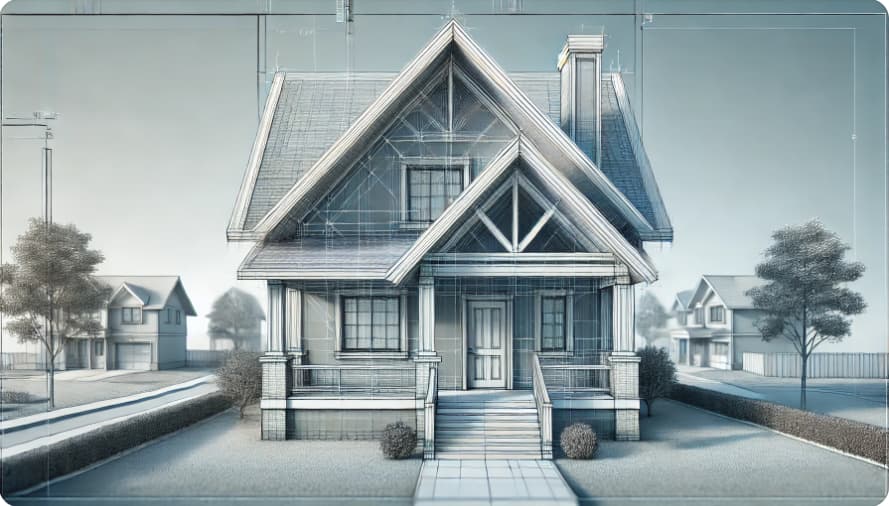Roofing
Hip Roof vs. Gable Roof : Which One is Best for Your Home?
When choosing a roof for your home, the decision often comes down to the hip roof vs. gable roof debate. Both roof styles offer unique advantages and serve specific purposes, depending on factors like your home’s location, climate, and design preferences.
In this article, we’ll explore the key differences between hip roofs and gable roofs, providing you with the information needed to make the best decision for your project.
Whether you’re building an extension, a gazebo, or a new garage, understanding the pros and cons of each roof type is essential. For expert advice on roofing installation, feel free to consult a trusted roofing contractor.
1. What is a Gable Roof?
A gable roof is a common roof style characterized by two sloping sides that meet at a ridge, forming a triangular end called a gable. This triangular section is not made from roofing material but typically from the same material used on the home’s siding.
Gable roofs are popular in colder climates, such as New England and the east coast of Canada, where their steep slopes help with snow shedding. The simplicity of gable roofs also makes them more affordable to build and easier to ventilate, with gable vents commonly installed for better airflow.
Gable roofs can range from simple designs to more complex layouts, making them versatile for various home styles. Their ease of construction and relatively low cost make them a popular choice for residential buildings. For a detailed consultation on gable roof installation, contact a reliable roofing specialist today.
2. What is a Hip Roof?
A hip roof features four sloping sides that meet at the top of the roof, with no vertical gables. This design is common in modern suburban homes and is favored for its durability and ability to withstand harsh weather conditions.
Hip roofs are particularly strong because their structure distributes wind pressure more evenly, making them ideal for homes in high-wind areas. The construction process for a hip roof is slightly more complex than for a gable roof, but this adds to its overall durability and long-term value.
Hip roofs are commonly seen in architectural styles like pavilions, gazebos, and detached garages, as their symmetrical design complements these structures. If you’re planning to install a hip roof, it’s wise to seek advice from a roofing expert to ensure the best results for your home.
3. Key Differences Between Hip Roof and Gable Roof
When comparing hip roofs vs. gable roofs, it’s important to understand the key distinctions that may affect your decision. One of the main differences is the number of sloping sides.
A gable roof has two sloping sides that meet at a ridge, leaving the other two sides as vertical walls. In contrast, a hip roof has four sloping sides, offering a more enclosed structure.
In terms of cost, hip roofs tend to be more expensive due to their complexity, while gable roofs are simpler and cheaper to construct. However, hip roofs provide better protection against wind damage, making them a popular choice in storm-prone areas.
Gable roofs, on the other hand, are ideal for regions with heavy snowfall, as their steep slopes allow for better snow shedding.
For an easy comparison, refer to the table below:
Table: Key Differences Between Hip Roof and Gable Roof
| Feature | Hip Roof |
Gable Roof |
|
Number of Sides |
4 sides slope downwards | 2 sides slope, 2 vertical ends |
|
Cost |
More expensive | Less expensive |
| Wind Resistance | Better wind resistance |
Worse wind performance |
| Snow Performance | Worse snow performance |
Better snow performance |
| Attic Space | Less attic space |
More attic space |
If you’re unsure which roof is best for your needs, consult a professional roofing contractor to help you make the right choice.
4. Types of Hip and Gable Roofs
4.1 Types of Hip Roofs:
- Pyramid Hip Roof: A hip roof where all sides slope toward a single peak, commonly used for gazebos or pavilions.
- Mansard Roof: Features two slopes on each side, with the lower slope being steeper.
- Hip and Valley Roof: A more complex design with valleys where roof planes meet.
4.2 Types of Gable Roofs:
- Open Gable: A traditional gable roof with the triangular ends made from the home’s siding material.
- Box Gable: Enclosed gable roof where the gable is extended.
- Cross Gable: Combines two gable sections intersecting at right angles, often seen in large homes.
These variations allow homeowners to select a roof style that best suits their architectural preferences and functional needs. If you’re considering one of these styles, contact a trusted roofing expert for more information.
5. Hip Roof vs. Gable Roof for Insurance
5.1 Insurance Benefits of Hip Roofs:
One of the key benefits of a hip roof is its ability to lower home insurance premiums. Homes with hip roofs often qualify for discounts of 5-10% on the wind portion of their insurance premium due to their better wind resistance.
The sloping sides of a hip roof help distribute wind pressure evenly, reducing the likelihood of damage during storms.
Homeowners in hurricane-prone areas, such as Florida, may particularly benefit from installing a hip roof. To learn more about insurance savings, consider getting a quote from a trusted roofing contractor.
5.2 Gable Roof Insurance Considerations:
Although gable roofs are simpler to construct and less expensive, they tend to be more vulnerable to wind damage, which can increase insurance premiums in certain regions.
However, homes with both hip and gable sections may still qualify for discounts if over 90% of the roof is hip. To determine eligibility, contact your insurance provider or a local roofing professional.
6. Advantages and Disadvantages of Hip Roofs
6.1 Advantages:
- High Wind Performance: Hip roofs excel in high-wind environments due to their sloping sides.
- Energy Efficiency: The structure of a hip roof helps to reduce heating and cooling costs.
- Durability: Hip roofs are sturdy and often come with insurance benefits for homeowners.
6.2 Disadvantages:
- Higher Cost: Due to their complexity, hip roofs require more materials and labor, which increases the overall cost.
- Limited Attic Space: The sloping sides of a hip roof limit the amount of usable attic space compared to a gable roof.
7. Advantages and Disadvantages of Gable Roofs
7.1 Advantages:
- Affordability: Gable roofs are more cost-effective and easier to construct.
- More Attic Space: Gable roofs provide ample attic space, making them ideal for storage or additional rooms.
- Better Snow Shedding: The steep slopes of a gable roof help with snow shedding, making them ideal for colder climates.
7.2 Disadvantages:
- Vulnerable to High Winds: Gable roofs may struggle in high-wind areas due to their vertical ends.
- Additional Bracing Required: Gable roofs often need extra bracing to improve wind resistance, adding to construction time and cost.
8. Choosing the Right Roof Type for Your Home
When choosing between a hip roof vs. gable roof, it’s essential to consider factors such as cost, climate, and personal preference. If you live in an area with high winds, a hip roof may be the better option.
However, if your home is in a region that experiences heavy snow, a gable roof might offer better snow-shedding capabilities. For personalized advice, it’s always best to consult with a roofing expert who can help you choose the right roof for your home. Get started with a professional roofing consultation today.
Conclusion
Both hip roofs and gable roofs offer distinct advantages, from cost and construction simplicity to durability and weather resistance. Your choice ultimately depends on your home’s location, budget, and the architectural design you prefer.
Which roof type suits your needs the most? Share your thoughts in the comments below and don’t forget to like and share this article!
Frequently Asked Questions
1. Which is better, gable or hip roof?
A. The choice between a gable and hip roof depends on your location and needs. A gable roof is more affordable and provides more attic space, making it ideal for regions with heavy snow.
A hip roof, on the other hand, offers better wind resistance and durability, making it a better option for areas prone to storms and high winds.
2. How do I know if I have a hip roof or a gable roof?
A. You can easily identify a hip roof by the fact that all four sides slope downward toward the walls. In contrast, a gable roof has two sloping sides, while the other two sides are vertical walls, forming a triangular shape known as a gable.
3. What is the biggest advantage to having a hip roof?
A. The biggest advantage of a hip roof is its superior wind resistance. Its four sloping sides distribute wind pressure evenly, making it more durable and less likely to suffer damage in areas with high winds or storms.
Recent Posts
- Hip Roof: A Guide to Durable and Stylish Roofing
- What Color Siding Goes With a Copper Roof
- How to Clean a Copper Roof: Restore Its Shine!
- Copper Roof Installation: A Guide to Durable and Stylish Roofing
- How Much Does a Copper Roof Cost? Unveiling Costs, Benefits, and Key Tips

